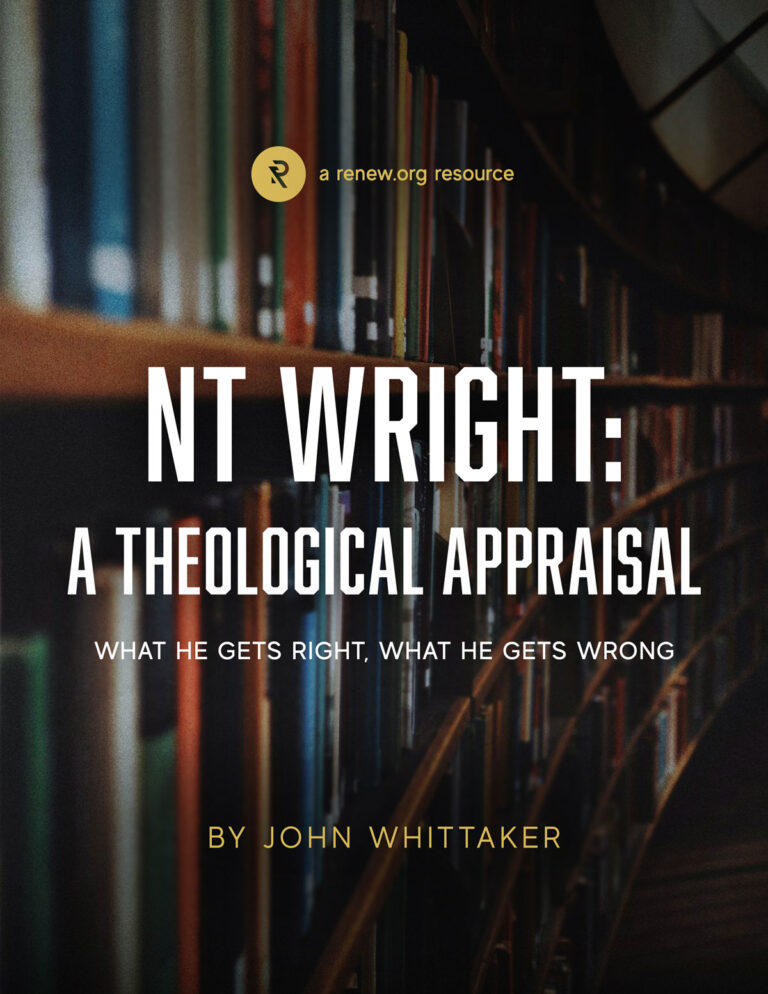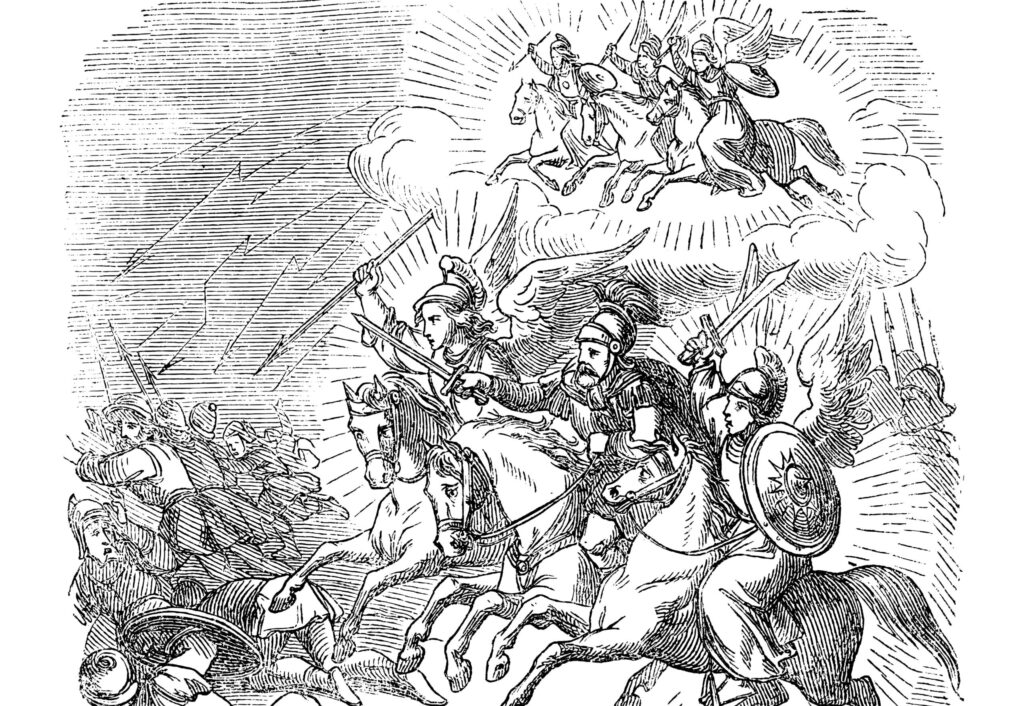The Apocrypha. Even the word is mysterious, perhaps conjuring up some Amazon.com-only work on the “lost books of the Bible.” For evangelicals, the Apocrypha can be intimidating, as its presence in Catholic Bibles raises questions about the commonly held 66-book canon of the Protestant Bible. Indeed, the word apocrypha is actually a Greek word that means something like “hidden” or “secret.” The term was first used by the Alexandrian theologian Origen (d. 254) to describe the books written after Malachi and before Jesus. Origen used the term because he knew that these works were not generally part of the Jewish canon and were therefore secondary (or hidden). Origen knew these works well, acknowledging their value for the church, but warning that certain non-canonical Jewish books may well have been invented to make Christians stumble.[1]
Today, the word Apocrypha typically describes a fairly large and loosely connected set of books that were written about Jewish life (the “Old Testament Apocrypha”) or about Christian life (the “Christian Apocrypha” or “New Testament Apocrypha”). The Christian Apocrypha includes around thirty books (or more, depending on how one counts them). These are books that have the same feel as New Testament books, with suspiciously similar names: “the Epistle of the Apostles,” “the Apocalypse of Peter,” or “the Gospel of Peter.”
The Old Testament Apocrypha is commonly said to include as many as eighteen books.[2] There are additional non-canonical Jewish books from the period before the New Testament which aren’t considered to be part of the Apocrypha. All of these books, whether in the Apocrypha or not, were written from the fourth to first centuries B.C., with possible edits even into the Christian era.
“All of these books, whether in the Apocrypha or not, were written from the fourth to first centuries B.C., with possible edits even into the Christian era.”
Since we’re focusing on the Old Testament Apocrypha in this article, first, let’s situate these books in their world, briefly discussing their historical context. Unless otherwise noted, from here on, when we use the term “Apocrypha,” we’ll be referring to the Old Testament Apocrypha.
These Apocryphal works were written during the period of Jewish life starting right after the conquests of Alexander the Great (d. 323 B.C.) and going right up until the Roman occupation of Judaea (63 B.C.) and afterward. This is true even of those Apocryphal works that describe events earlier than Alexander’s time, such as the additions to Daniel, Esther, Tobit, and Judith. This era of Jewish life under the Greeks and Romans was a time of constant problems for the Jews, which we’ll briefly discuss here.
Pressure to Go Greek
First, there was the influence of Alexander the Great. When Alexander swept the world east of Greece, he took with him a powerful idea—namely, that Hellenistic culture (i.e., Greek culture) was superior to all other cultures. For this reason, Alexander not only conquered land as far east as India, but he insisted that his lands adopt a Hellenistic way of life. Many were happy with this arrangement, for Greek culture brought a lot of benefits: the Greek language, which became a language of commerce; Greek literature, rhetoric, and philosophy; the polis (city-state) and its habits; the gymnasia, theater, and many other Greek institutions.
But faithful Jews could not be happy with this Hellenization, for it posed a serious threat to Judaism by luring Jews away from the Torah and into Greek paganism. Much of the background to the Apocrypha is involved in this conflict of civilizations, as faithful Jews found themselves in constant struggle to remain separate from the pressures of Hellenism. In fact, it is not too much to say that the common thread of almost every Apocryphal book is that of resisting pagan culture.
After the death of Alexander the Great, his conquests were divided into four territories ruled by Alexander’s generals. Most important for our study were the territories of Ptolemy in Egypt and Seleucus in Syria and Palestine. The Seleucids would put constant pressure on the land of the Jews through taxes, wars, and, especially, through social pressure for the Jews to acclimate to Greek culture and its gods.
“The Seleucids would put constant pressure on the land of the Jews through taxes, wars, and, especially, through social pressure for the Jews to acclimate to Greek culture and its gods.”
War for Independence
Most notorious of the Seleucid rulers was Antiochus IV, who called himself Epiphanes (meaning “god”), but whom the Jews mockingly called Epimenes (meaning “insane”). Antiochus IV was ruler of the Seleucid kingdom from 175 until his death in 164 B.C. Antiochus was a monster to faithful Jews, since he created intense pressure, often under the pains of death, for the Jews to Hellenize—that is, to become Greek.
This pressure came to a climax in 168 B.C., after Antiochus was humiliated by the Romans in an effort to subdue the Ptolemies. In response to this humiliation, Antiochus decided to annihilate Jewish culture forever. He entered Jerusalem, dedicated the Jewish temple to the Greek god Zeus, and began to offer sacrifices to Zeus there. Many Jews had already capitulated to Antiochus, and many young Jews enjoyed identifying with Greek culture. Antiochus’ desecration of the temple, however, which would later serve as a source for Jesus’ words in Mark 13:14 (“the abomination of desolation”), was too much for many faithful Jews. The event sparked a revolt by the priestly family of Mattathias, led by his son Judas Maccabeus and his brothers.
The Maccabean revolt is one of the most important events in Jewish history. It restored Jewish rule in the land of Judea. It created the environment in which the political parties we know of in the New Testament could flourish: the Pharisees, the Sadducees, and more. Very importantly, the Maccabean revolt served as a symbol of eternal resistance to paganization for all Jews henceforth.
“The Maccabean revolt served as a symbol of eternal resistance to paganization for all Jews henceforth.”
Maccabees won the revolt and restored the Temple, which to this day is commemorated in the Jewish festival of Hannukah. Judas Maccabeus’s brother Simon became king, as well as, with the approval of the rising power of Rome, high priest. Simon led the Jews from 142-135 B.C. The subsequent Jewish rulers were called the “Simons,” which in Hebrew is Hasmonian.
Hasmonian Rule
The books of 1 and 2 Maccabees in the Apocrypha give us some of our best information about this period, describing the wars of the Ptolemies and the Seleucids, as well as the Maccabean revolt in detail. These books also discuss the Hasmonians in some detail, giving us our best information about this short-lived period of Jewish self-rule. So, we can be sure that these two Apocryphal works were produced around the middle of the second century or later.
The Hasmonians ruled for a short one hundred years in Judea, and during that time there were numerous problems for the Jews, including political struggles that kept life unstable in Judea. In 63 B.C. the Roman general Pompey entered Judea and exercised Roman rule over the land, leaving political appointees behind to administer the state. This act ended Jewish self-rule, with brief exceptions during the revolts of A.D. 66-73 and 132-136, right up until A.D. 1948, when the modern state of Israel was recognized by the United Nations.
Several of the Apocryphal works were likely written in Judea during these Hasmonian years, especially those originally composed in the Hebrew language. This is supported by the fact that several Apocryphal works are found in the Dead Sea Scrolls, which were produced by a monastic community that flourished during the second and first centuries B.C. Apocryphal works found among the Dead Sea Scrolls include Tobit, Sirach, 1 Maccabees, Baruch, and the additions to Daniel.
“In 63 B.C. the Roman general Pompey entered Judea and exercised Roman rule over the land, leaving political appointees behind to administer the state.”
The Jews in Egypt and the Septuagint
While the Jews of Judea were struggling against the Seleucids, the Ptolemies in Egypt were at times making it very difficult for the very large Jewish community in Egypt and its large port city, Alexandria. This community, separated from the Palestinian Jews, was developing its own Jewish traditions and books, including some of the works that would eventually be called the Apocrypha. These works included treatises on wisdom, legends, history books, and even a couple of apocalyptic works, but they all share a common theme: the need for Jews to reject assimilating with the Greeks and other nations around them. However, these works often show the clear marks of Hellenism even while opposed to it. For example, many of these works were originally written in Greek even while they are opposed to Greek culture.
In the third and second centuries B.C., the Alexandrian Jews translated the Old Testament into Greek, since many Egyptian Jews no longer spoke Hebrew or Aramaic. A tradition says that seventy or seventy-two Jewish scholars created this translation, so the translation is called The Seventy, which in Latin is Septuagint or the number LXX.
“Many of these works were originally written in Greek even while they are opposed to Greek culture.”
The Septuagint is very important for several reasons. First, it became the Old Testament for the diaspora (the Jews living across the Mediterranean) who didn’t speak Hebrew. Second, because the Christian church quickly became Gentile and did not speak Hebrew, the early church also used the Septuagint as its Old Testament, making the Septuagint the Christian Old Testament in the early church. Indeed, even the New Testament writers seem to prefer the Septuagint in their works. There are around 400 quotes and strong references to the Old Testament in the New Testament, and as many as 340 of these appear to be from the Septuagint.[3] Even today, in Eastern Orthodox churches, versions of the Septuagint are used as Scripture.
But the Septuagint is important for another reason. The Septuagint gradually added a number of later Jewish documents mentioned above to its pages, creating the body of literature we call the Apocrypha. Why the Alexandrian Jews added these documents to the Septuagint is unclear, but it is clear that these additions were not considered canonical either by the Jewish rabbis in Israel or by the New Testament writers, the latter of whom never quote from the Apocrypha. This is important: neither the Jews in Israel nor the New Testament writers acknowledge the Apocrypha of the Septuagint as canonical. In chapter 3 of our eBook The Apocrypha and the Book of Enoch, we’ll explore the question of whether we should use the Apocrypha in our Bibles today.
“The Septuagint gradually added a number of later Jewish documents mentioned above to its pages, creating the body of literature we call the Apocrypha.”
When the Christian movement moved out of the land of Israel and into the Greek-speaking world, Christians had to use the Septuagint, since very few Christians would have understood Hebrew. Since this made the Septuagint the official Old Testament for the church, the early church was forced to deal with the Apocrypha, already embedded in the Septuagint by Alexandrian Jews. Thus, we start to see some use of the Apocrypha by Christians early in the church’s history. It is quoted by Christian writers even in the second century, and some of the best manuscripts of the Old Testament produced by Christians, also writing in Greek, include some of the Apocryphal books.
It is important to say, however, that not all Christians accepted the Apocrypha as canonical. It was considered “secondary” by Origen, a church father who actually lived in Alexandria. It was also largely rejected by the great defender of orthodoxy, Athanasius. Jerome argued against including the books of the Apocrypha in his magisterial translation of the Bible, the Latin Vulgate, though he eventually acquiesced to pressure from others and included it anyway. The point not to be missed here is that the reason the church sometimes accepted the Apocrypha is that it was in the Septuagint, not because it was included in the Hebrew Old Testament.
Preserving the Apocrypha
Ironically, it was the church’s use of the Septuagint that actually preserved much of the Apocrypha for later use. Apart from texts and fragments of the Apocrypha in the Dead Sea Scrolls and in papyrus fragments found in Egypt, our earliest complete copies of much of the Apocrypha are found in Christian manuscripts of the Old Testament, especially the Christian codices Alexandrinus, Sinaiticus, and Vaticanus of the fourth and fifth centuries A.D. So when you see modern editions of the Apocrypha, these most certainly came from Christian manuscripts of the Bible—not Hebrew—from the fourth and fifth centuries A.D. or later. The most commonly-used version of the Septuagint today, originally compiled in 1935 by philologist Alfred Rahlf, makes extensive use of these later Christian manuscripts. We say all of this to emphasize that the Apocrypha was in the canon of the Alexandrian Bible, not in the canon of the Hebrew Bible.
So, while the church adopted the Septuagint translation of the Old Testament, the global Jewish community ultimately rejected it. After the fall of Jerusalem and with the rising standardization of the synagogue, the Jews across the empire returned to the Hebrew canon, carefully preserving it, reading from it, and living by its strictures. The Jews after the Roman wars even came to grant the Hebrew text a mystical if not magical quality. Commentaries even focused on such subtle questions as the spiritual significance of Genesis in Hebrew beginning with the letter beth (B). This adoration of the Hebrew text (without the Apocrypha) explains why in synagogues around the world, with their many languages, even to this day, Jewish people read from the Hebrew text of Scripture—even if nobody present understands the Hebrew language!
“While the church adopted the Septuagint translation of the Old Testament, the global Jewish community ultimately rejected it.”
The Jews stood firm on the original Hebrew canon of the Old Testament, spending enormous amounts of energy transcribing, preserving, and honoring it. At the same time, they moved on from the Greek translation of the Old Testament with its Apocryphal insertions.
Many evangelicals entertain only one pressing question about the Apocrypha: should the Apocrypha be in our Bibles? As we see in chapter 3 of our eBook, the short answer is no, but before we examine the question more fully, let’s explore the Apocrypha, for regardless of its canonical status, we can learn a lot from these books.
If we include all the Apocryphal works used by the Greek and Roman churches, there are eighteen books counted as part of the Apocrypha. In chapter 2 of our eBook, we briefly look at each to get a feel for each book. Again, you’ll notice that there is a common thread in these works: the need to remain faithful Jews in the face of pagan cultures.
Excerpted from Jonathan Young & David Young, The Apocrypha and the Book of Enoch: What They Are & Why They Don’t Belong in the Bible.
[1] Commentary on Matthew, Matt. 23:37-39. Eng. translation: Commentary, volume 2, translated and edited by Ronald E. Heine, (Oxford University Press, n.d.), p. 581
[2] The numbers are confusing for several reasons. For example, at the Council of Trent (1545-63) the Catholic Bible officially canonized nine apocryphal listings not in the Protestant Bible: Tobit, Judith, Wisdom, Sirach, Baruch, 1 and 2 Maccabees, and additions to Esther and Daniel. But these nine works are actually twelve, since the Letter of Jeremiah is included in Baruch in the Catholic Bible, and the additions to Daniel in the Catholic Bible include the Prayer of Azariah, Susanna, and Bel and the Dragon. The Orthodox churches include one or two more, and the early Greek translations of the Old Testament contain differing numbers of Apocrypha. Further, there were other intertestamental works circulating which are generally called “pseudepigrapha,” rather than Apocrypha, because they were evidently never considered canonical by the mainstream church. These include such works as Sibylline Oracles, Jubilees, Martyrdom and Ascension of Isaiah, 1 Enoch, and others, especially if one includes works from the era after Christ, where there are many other Jewish works considered pseudepigraphical.
[3] See Gleason Archer and G. C. Chirichigno, Old Testament Quotations in the New Testament: A Complete Survey (Eugene, OR: Wipf and Stock, reprint 2005), 25-32.












